By Robbin Laird
On 27 September 2023, the second Williams Foundation seminar for the year was held at the National Gallery in Canberra. The first focused on deterrence and the second provided a case study of building blocks for enhanced deterrent capabilities, namely shaping a multi-domain strike enterprise for the ADF and the support structure for so doing.
At the outset of the Seminar, Air Marshal (Retired) Geoff Brown, the Williams Foundation Chairman, underscored the purpose and focus of the seminar: “Simply new weapons like Tomahawk will not by themselves give Australia a credible strike enterprise. All those weapons do not give you a long-range strike capability. We are focused on the requirements to build a multi-domain enterprise beyond the question of the specific weapons.”
SQNLDR Sally Knox, the moderator for the seminar and a member of the Williams Foundation added: “The aim of today’s seminar is to further develop the theme of deterrence, which we spoke about at the March conference. We will examine the enterprise requirements of a sovereign multi-domain strike capability in the context of the defence strategic review. As part of that effort, we will examine the apparatus of an Australian capability needed to strike into the into the broader region, including the implications of a national industrial base, as well as access and basing considerations.”
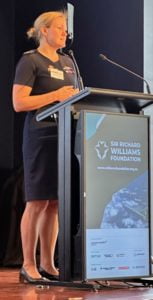
Australia has focused on building a fifth-Genration force which inherently is focused on integratability at the high-end. Part of the discussions revolved around looking at next steps, for multi-domain strike is inherent in the concept of fifth generation airpower.
Multi-domain strike is about interactive targeting capability across a deployed force or third-party targeting. The question of what the roles of ISR and C2 are in the evolution of fifth generation airpower has been a key theme over the past few years in Williams Foundation seminars. This discussion was broadened to focus on strike enablement by such an integrated force.
But linking the first seminar of the year with the second raises a key question: What kinds of strike have higher deterrent value than others? Is it range? Is it targeting the adversary’s C2 and core ISR capabilities?
There clearly is a difference between strike delivered by HIMARS systems and by Tomahawks with regard to purpose and deterrent effect. This was inherent in the discussions but not focused on as a core question, but clearly needs further consideration as well.
In the report to follow, I will highlight all of the presentations and organize the key contributions of the presenters within the overall discussion of shaping a strike enterprise. Here I will quote a few of the presentations to highlight key themes discussed during the day.
The PACAF Commander, General Ken Wilsbach, provided a video presentation. He has been a stalwart supporter of the Williams Foundation seminars during his time as PACAF for many reasons, but a core one is his emphasis on the positive impact of the integratability of the U.S. and Australian Air Forces and their sharing with other allies of their robust integrated operating experience.
The collaboration between the operational militaries has been a key factor shaping more effective defence collaboration, and combat and deterrent capabilities.
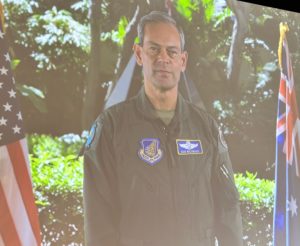
Wilsbach underscored why enhanced multi-domain strike was so important in shaping force evolution in the region: “Multi-domain operations allow us to overwhelm the adversary. Historically, warfare carries certain constants. One of the most important of these is gaining and maintaining the initiative. A combatant seizes the initiative, not through advanced technologies or superior training, but because they hit the adversary hard enough to knock them off balance, then hit them repeatedly to maintain an enduring advantage. pressure generated by synchronizing operations in time and space creates the opportunities where technology and training can make a difference.”
In my recent book on the F-35 global enterprise, I emphasized how crucial collaboration among allied militaries has been to even see the emergence of fifth generation capability. General Wilsbach made a similar point with regard to shaping a way ahead for a multi-domain strike enterprise.
“Our first job is to ensure that everyone in our respective services understand why these new multi-domain skills are necessary. If they don’t buy in, they won’t work toward developing at the pace we need.
“Our second job is to remove the obstacles from their path to modernize, integrate and innovate.
“Every person at this conference likely has a story of how a great idea was shut down before it got off the ground purely due to bureaucracy. This is an area that America can and should learn from Australia; your aviators are far less likely to stumble over bureaucratic hurdles than American airmen. We cannot afford to let process stand in the way of progress.
“The men and women in this room are the ones who set priorities and establish expectations. If you as leaders are onboard and your aviators are ready, but progress still stalls, find the chaff in your organization and burn it out. We will only be able to effectively compete if we stop hobbling ourselves. First; deterrence is our top priority but should it fail, we must also ensure our people are prepared for what follows. Those same men and women that set the global standard for what an airman or aviator should be in competition must also set the standard for how a joint operator executes the mission and conflict.
“Those personnel are the ones most likely to understand the challenges we face from a pure adversary and the inadequacy of a single domain response as leaders convey the why and then trust them to make the changes necessary to accelerate our response for new airmen and aviators joining our ranks built in multi domain warfare concepts from the outset. To them, the differences between services should be nothing more than the uniform.”
In a later presentation, the other distinguished foreign airpower leader, Air Marshal Harvey Smyth, the Air and Apace commander, Royal Air Force, underscored that all strike is not equal. He highlighted the importance of longer-range strike, which for the RAF was their Storm Shadow weapon, first deployed on Tornados and now on Eurofighters. The next generation of Storm Shadow is the SPEAR family of weapons being developed to be able to be fired by the F-35 as well. It should be noted that MBDA as a French-British company is a key part of building capability for both air forces and does represent the core need to collaborate in weapons development and production between allied countries.
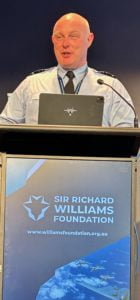
But Smyth added a key thought with regard to multi-domain strike and the defence enterprise. If you are shaping multi-domain strike you need to be focused as well on integrated air and missile defence. This is key reminder that development in one part of defence capability drives change in another.
There was significant discussion of the changes in ISR and C2 associated with building a multi-domain strike enterprise. And the several years of discussion of fifth generation airpower and force building in earlier Williams Foundation seminars presaged much of this discussion and provides a significant body of analysis in thinking through the way ahead.
ISR delivered through various means, Triton UAVs, space-based assets, F-35s, Growlers, specialized ISR airplanes, etc, are becoming more than simply collectors for decision makers. Given the need to operate at the speed of relevance those ISR operators are now part of providing rapid inputs to strike decisions and are not part of a long ISR to decider kill chain which has been used in the land wars.
Speed to relevance requires a significant shift in how ISR is embodied in decision-making more rapidly. One of the speakers, WGCDR Marija Jovanovich, Commanding Officer 10 SQN, explicitly discussed what I think is nothing less than a revolution in ISR capabilities at the tactical edge and their role in empowering distributed force C2.
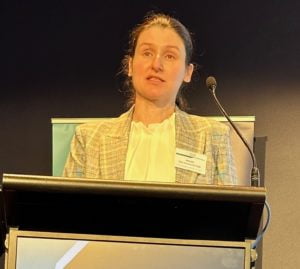
She mentioned explicitly her participation in NAWDCs’ Resolute Hunter exercise, an exercise which I observed in part which highlights the change. The essence of the training seen in Resolute Hunger is part of newly evolving shape of the multi-domain strike enterprise.
This is how I and my co-author described the exercise in our book on The Maritime Kill Web Force in the Making (which coincidently has a drawing of an Australian Triton on the cover):
“Cmdr. Pete “Two Times” Salvaggio, the head of the MISR Weapons School (MISRWS), was in charge of the Resolute Hunter exercise. In a discussion with “Two Times” in his office during the November 2020 visit, he underscored the shift underway. The goal of the training embodied in the exercise is for operators in airborne ISR to operate as “puzzle solvers.” Rather than looking at these airborne teams as the human managers of airborne sensors, “we are training future Jedi Knights.”
“And to be clear, all the assets used in the exercise are not normally thought of as ISR platforms but are platforms that have significant sensor capabilities. It really was about focusing on sensor networks and sorting through how these platform/networks could best shape an understanding of the evolving mission and paths to mission effectiveness.
“The ISR sensor networks with men in the loop can deliver decisions with regard to the nature of the evolving tactical situation, and the kinds of decisions which need to be made in the fluid combat environment. It may be to kill or to adjust judgements about what that battlespace actually signifies in terms of what needs to be done.
“And given the speed with which kill decisions need to be made with regards to certain classes of weapons, the ISR/C2 network will operate as the key element of a strike auction. Which shooter needs to do what at which point in time to degrade the target? How best to determine which element of the shoot sequence—not the kill chain—needs to do what in a timely manner, when fighting at the speed of light?
“What ISR capabilities can deliver are “moments of clarity” with regard to decisive actions. At a minimum, the ISR teams are shifting from providing information for someone else to make a decision to being able to deconstruct the battlefield decision to craft real time understanding of the situation and the targeting options and priorities.”
The discussion of C2 throughout the day underscored the impact of the shift to distributed force operations upon how to make decisions which tapped into various groupings of platforms to deliver multi-domain strike to deliver the desired effect.
In the presentation by defence analyst Carl Rhodes, he underscored the scope and nature of the change required: “So if we look at command and control, what allows us to go from today’s capabilities to these future concepts?
“First of all, the decision making needs to go from a very centralized process to a more decentralized process, delegating more authority down to the commanders who are in the air, potentially, or to multiple command cells in the field.
“The planning and execution can move from primarily a human centric process, assisted by computers, to maybe human centric AI assisted process to an AI enabled process, where humans are helping the process, but the AI is doing a lot of the work.
“So that’s command and control. You also need improved communications as well. So today, interoperability exists. It’s enabled in specific kill chains, but doesn’t exist for all parts of the force.
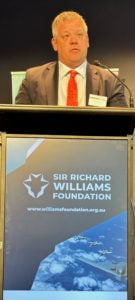
“And to move to these future concepts, you need to build it into systems, all systems kind of at birth across domain. You also need to think about resilience rather than just protecting individual links. How do you protect the entire system by using diverse paths independent decision making?”
A key theme embedded in several presentations was the nature of the ADF transition needed to fully adapt to multi-domain strike operations. For example, several speakers talked about the significant progress in tactical joint force targeting over the past decade. Now the challenge was to build on that progress to work more effectively to provide strategic multi-domain targeting.
And building out the military kit necessary to deliver strike is a key challenge for Australia. Here the working relationship with the United States is key to delivering the initial long-range strike capability. But going forward, as we discussed in the last seminar, there clearly needs to be an arsenal of democracy. This means the United Sates or the European designer of the weapon system is able to open production lines in Australia both Australian and allied needs.
As AVM Gerry van Leeuwen, Head of Guided Weapons and Explosive Ordinance put it:
“As global suppliers work to refill their inventory still recovering from the impacts of the “COVID global pandemic, they’re working in capacity to meet increasing demand, and the world seems to have woken up. To use an analogy, it looks like everyone’s in the same buffet line. And if you’re the back of the queue, you better not be too hungry.
“We’re currently working on creative ways to accelerate orders, and especially those long-range strike weapons. And not surprisingly, those weapons are the same weapons in high demand by the U.S. given our common interest in the Indo-PACOM region. But our relationship is strong and collegiate. The U.S. seemed willing to work with us in that regard, but have cautioned that if they provide advanced weapons for Australia, we sure as hell better be prepared to use them.”
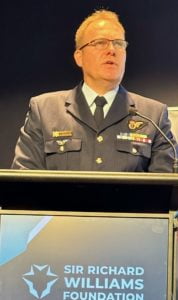
The scope of enterprise considerations was a key theme of the presentation by LTGEN John Frewen, Chief of Joint Capabilities. “Multi-domain infers the integration of all five domains, not just the three traditional domains with space, cyber and information as auxiliary add ones. Multi-domain requires the prioritization, sequencing and layering of kinetic and non-kinetic effects at moments in time and throughout a campaign. And this applies in both competition and conflict.
“And I offer four thoughts or areas for focus around Australia’s multi-domain strike enterprise…I’m just back from the U.S. last week. And all of the briefings I recently received spoke to see five ISR T and the T is targeting.
“And I think this is clear acknowledgment that our command-and-control systems and our targeting systems are inherently linked. And we’ve got to start to design and operate our C2 and targeting systems as part of a whole and to defend them and our freedom to operate through cybersecurity, space control and electronic warfare.
“We will also need the ability to force generate the people and collective skills required to generate increasingly complex targeting and that will be an endeavor on itself.
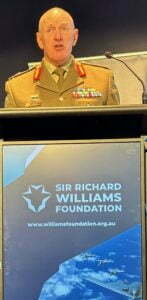
“Secondly, no C2 targeting system going forward will be effective unless it is empowered through artificial intelligence. This is both in a sense of data management of ever-increasing volumes of data and decision support in ever more complicated environments, including machine on machine contests. We must build effective AI into all of our systems from here on in and start to grow the specialist workforce needed to design enable and oversee ai ai capabilities.
“Whether in competition or conflict, no government or military endeavor will succeed without understanding, if not dominating the information environment. And this has always been true even if we have not always been as conscious of it as we are now.
“What has changed is the scale of content and range of mediums for information, the evolution of the art of misinformation, and the appetite of some populations for alternative truths. All of this is now being fueled by machine capabilities and AI in ways that are beyond traditional means of management.
“We must increasingly grow our capacities both human and machine in the information environment. This is essential to deterrence and to competition and conflict and we must not permit a targeting system to evolve that is not fully aware of and nested with information and other non-kinetic effects.
“And finally, we cannot overlook the centrality of logistics to all we do. This applies to multi-domain targeting as much as it does to conventional maneuver. Targeting, even in its most kinetic sense, will require a resilient logistics network to deliver money, munitions, maintenance and sustainment both here domestically.
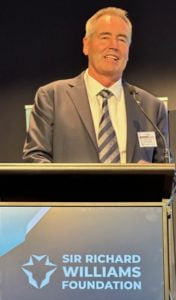
“And in areas of intense conflict, it will be folly to develop a sophisticated targeting enterprise that does not have comparable investment in a logistics enterprise that has in recent decades been designed for efficiency rather than resilience.”
Air Marshal (Retired) Brown concluded the session by raising two cautionary notes. The first was the question of structuring DoD to be able to deliver the effects desired. And second was the question of resources.
“We have a DSR that is strategically ambitious. And I basically agree with most of the things that are in it, but it is not funded. And while it is not funded, that creates an enormous problem for the DoD and for the IDF going forward.”


